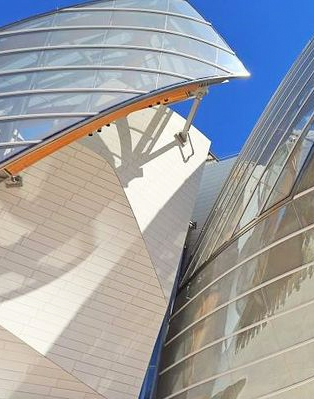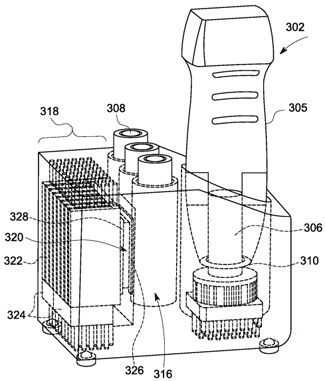 The Phase Change Matters e-mail newsletter is a weekly summary of the latest news and research on phase change materials and thermal energy storage. To subscribe, visit www.puretemp.com/subscribe. For more frequent updates, follow @puretemp on Twitter or visit the Phase Change Matters blog, www.puretemp.com/pcmatters.
The Phase Change Matters e-mail newsletter is a weekly summary of the latest news and research on phase change materials and thermal energy storage. To subscribe, visit www.puretemp.com/subscribe. For more frequent updates, follow @puretemp on Twitter or visit the Phase Change Matters blog, www.puretemp.com/pcmatters.
CONFERENCES
Advanced Buildings Skins conference to feature 10+ sessions on PCM
The agenda is taking shape for the 12th International Conference on Advanced Building Skins, to be held Oct. 2-3 in Bern, Switzerland. More than 250 speakers from 40 nations will give presentations.
The registration fee is 680 euros and includes the conference documentation as well as meals during both days. Participants who register by June 30 will receive a 20 percent discount.
Presentations related to phase change material, all conducted in English, include:
• “Ventilation units with PCM for double-skin BIPV façades,” Jakub Curpek, faculty of Civil Engineering STU in Bratislava, Slovakia
 • “PCM melting temperature optimization for passive cooling and heating,” Alvaro de Gracia, University Rovira i Virgili, Spain
• “PCM melting temperature optimization for passive cooling and heating,” Alvaro de Gracia, University Rovira i Virgili, Spain
• “Thermal properties of a four-pane window filled with PCM,” Martin Zalesak, Tomas Bata University, Czech Republic
• “PCM-enhanced mortar for thermally activated building components,” Lorenzo Olivieri, Instituto de Ciencias de la Construcción Eduardo Torroja, Spain
• “Thermal performance of multifunctional façade contained PCM,” Romeu Vicente, Department of Civil Engineering, University of Aveiro, Portugal
• “Microcapsulated PCM and geopolymer concrete,” Vinh Duy Cao, Østfold University College, Norway
• “Implementing hysteresis and subcooling in simulation of PCM panels,” Craig Farnham, Osaka City University, Japan
• “Lightweight building envelopes with PCM,” Ricardo Almeida, CI&DETS – Polytechnic Institute of Viseu, Portugal
• “Thermal Performance of Phase Change Materials for the Building Skin Granular phase change material composites,” Xiangyu Li, Taiyuan University of Technology, China
• “Numerical investigation of a ventilated façade with PCM for heating purposes,” Josep Ramon Castro, University of Lleida, Spain
PATENTS
Temperature management for storage and therapeutic applications
U.S. patent application 20170172790 (applicants Najih Naser, Amna N. Naser and Abdel-rahman N. Naser of Cary, N.C.):
“This invention provides a flexible and dynamic energy storage and transfer device for safe storage and transport of temperature sensitive products and for therapeutic uses. The portable device includes interactive chambers containing energy receptor materials with thermal holding capacity for cooling and heating purposes. … A primary objective … is to provide a new configuration of an interactive enclosure and phase change composition holding media matrix for rapid thermal energy response and enhanced therapeutic energy transmission.”
Docking station for an ultrasound probe
 U.S. patent application 20170172542 (applicant General Electric Co., Schenectady, N.Y.):
U.S. patent application 20170172542 (applicant General Electric Co., Schenectady, N.Y.):
“A docking station for electrically charging and managing a thermal condition of an ultrasound probe [302] is presented. The docking station includes a first charging unit magnetically coupled to an induction unit of the ultrasound probe and configured to charge at least one battery in the ultrasound probe. Further, the docking station includes a first cooling unit thermally coupled to a thermal unit of the ultrasound probe and configured to dissipate heat from the ultrasound probe. … In one example, one of the ports that facilitate the replacement of the thermal units may be positioned at the bottom surface [310] of the probe [302]. As the new thermal unit [308] is used to replace the thermal unit [306], the new thermal unit may also be referred to as a replaceable thermal unit.”
Temperature-staged thermal energy storage enabling low thermal exergy loss
U.S. patent application 20170179879 (applicant California Institute of Technology, Pasadena, Calif.):
“A structure comprising: a photovoltaic module; a reflux boiling chamber configured to store thermal energy, the reflux boiling chamber comprising a plurality of temperature staged thermal energy storage materials, each temperature staged thermal energy storage material comprising a porous phase change material and configured to operate at a different temperature range than other temperature staged thermal energy storage materials, the reflux boiling chamber further configured to contain a working fluid; a thermodynamic heat engine; and a solar concentrator configured to concentrate sunlight towards the photovoltaic module and the reflux boiling chamber, wherein the reflux boiling chamber is further configured to transfer the thermal energy to the thermodynamic heat engine through the working fluid.”
Refrigerator and control method thereof
U.S. patent application 20170176083 (applicant LG Electronics, Seoul, South Korea):
“A refrigerator comprising: a main body having a storage chamber; a compressor configured to compress a refrigerant; a condenser configured to condense the refrigerant compressed by the compressor; an evaporation expander configured to depressurize the refrigerant condensed by the condenser; a first evaporator configured to evaporate the refrigerant depressurized by the evaporation expander and thus to cool the storage chamber; a condensing expander installed between the condenser and the evaporation expander and configured to depressurize the refrigerant condensed by the condenser; and a subsidiary condenser installed between the condensing expander and the evaporation expander and configured to condense the refrigerant depressurized by the condensing expander. … The refrigerator according to claim 3, further comprising a cold storage part having a phase change material (PCM) therein and in which the subsidiary condenser and the cold storage evaporator are installed, wherein the cold storage part exchanges heat with each of the subsidiary condenser and the cold storage evaporator.”
IN BRIEF
• At this month’s Techtextil North America trade show in Chicago, Alexium International said it was on track to ship more than 90,000 kilograms of its Alexicool PCM product in June. The company, based in Greer, S.C., and Perth, Australia, sells the product to mattress fabric producers. Alexium’s share price rose 21 percent last week on the Australian Securities Exchange, to 62.5 cents AUS.
• Ice Energy of Santa Barbara, Calif., has entered into an agreement calling for Apricus Australia to become the exclusive distributor for all Ice Energy products in Australia. Apricus will market and sell to utilities, businesses and residential customers and will be responsible for installation and service.
• The program has been posted for the 2017 Advancements in Thermal Management conference to be held in Denver Aug. 9-10. Mark Hartmann, CTO at Outlast Technologies, will give a presentation on “Thermal Runaway Prevention of Li-ion Batteries by Novel Thermal Management System.” Greg Albright, vice president of business development at AllCell Technologies, will give a presentation on “Conductivity Enhanced Phase Change Materials for Transient Loads.”
• Viking Cold Solutions of Houston has been named to Food Logistics magazine’s list of Top Green Providers for 2017. The list recognizes companies whose products, services or leadership is enhancing sustainability in the food and beverage industry. Viking makes a PCM-based thermal battery system designed cut energy consumption cold storage warehouses.
• Entropy Solutions, maker of PureTemp phase change materials, was among the companies honored with a Eureka! Innovation Award at a reception last week. The Minneapolis/St. Paul Business Journal awards program recognizes “game-changing” Minnesota businesses in energy, manufacturing, media, product design, engineering and other categories.
• Monodraught Ltd. has been accredited by the Chartered Institution of Building Services Engineers to deliver three new continuing professional development modules. One of the free courses explores the use of phase change materials in ventilation systems to reduce a building’s energy consumption and carbon footprint.
• Masdar Institute and the Massachusetts Institute of Technology have tested and validated what is touted as the world’s first direct absorption molten salt receiver for concentrated solar power. The single-tank thermal energy storage system has been operational for over two weeks at the Masdar Institute Solar Platform in Abu Dhabi, United Arab Emirates. The tank holds roughly 4 tons of molten salt, capable of reaching temperatures over 500 degrees Celsius.
• A study published in the journal Disaster Medicine and Public Health Preparedness highlights the importance of cooling vests for health care workers wearing personal protective equipment in hot, humid environments. Study participants wearing vests fitted with ice packs, phase change materials or water hoses under protective equipment showed fewer signs of heat stress than those who did not.
• New research from Future Market Insights: “Chilled Water Storage System Market: Global Industry Analysis 2012 – 2016 and Opportunity Assessment; 2017 – 2027”
RESEARCH ROUNDUP
For our full list of recent academic research, see puretemp.com/academic. Here are highlights from the past week:
From International Journal of Occupational Hygiene:• Evaluating the Performance of American Change Phase Paraffin Cooling Vest and Iranian Spadana Gel Ice Cooling Vest on the Perceptual and Physiological Strain Score Index in Hot and Humid Working Conditions of Assaluyeh in Iran
From Applied Thermal Engineering:
• Thermal energy harvest in the discharge of CO2 semi-clathrate hydrate in an emulated cold storage system
• Melting dynamics of a phase change material (PCM) with dispersed metallic nanoparticles using transport coefficients from empirical and mean field models
• Experimental investigation and theoretical analysis on a mid-temperature solar collector/storage system with composite PCM
From Solar Energy:
• Experimental and computational study of melting phase-change material in a triplex tube heat exchanger with longitudinal/triangular fins
• Thermodynamic modeling of nitrate materials for hybrid thermal energy storage: Using latent and sensible mechanisms
From Buildings:
• Outdoor Characterization of Phase Change Materials and Assessment of Their Energy Saving Potential to Reach NZEB
From Materials:
• Preparation and Supercooling Modification of Salt Hydrate Phase Change Materials Based on CaCl2·2H2O/CaCl2
From Journal of Materials Chemistry A:
• Nanoencapsulated crystallohydrate mixtures for advanced thermal energy storage
From Colloids and Surfaces A: Physicochemical and Engineering Aspects:
• Hexadecane-in-water emulsions as thermal-energy storage and heat transfer fluids: Connections between phase-transition temperature and period of hexadecane droplets dispersed in hexadecane-in-water emulsions and characteristics of surfactants
From Thermochimica Acta:
• Development of thermal enhanced n-octadecane/porous nano carbon-based materials using 3-step filtered vacuum impregnation method
From Energy and Buildings:
• The impact of phase change materials assisted night purge ventilation on the indoor thermal conditions of office buildings in hot-arid climates
From Advanced Materials Proceedings:
• Comparative assessment of thermal comfort with insulation and phase change materials utilizations in building roofs and walls [pdf]
NETWORKING
Connect with PCM experts and industry leaders on LinkedIn
More than 1,100 of your peers have joined a LinkedIn group devoted to the discussion of phase change material and thermal energy storage. The Phase Change Matters group is an interactive complement to the award-winning blog and newsletter of the same name.
 You are invited to join the group and connect with PCM and TES experts from around the world. New members include Dr. Kaushik Biswas, an R&D staff member in the Building Envelope Systems Research group at Oak Ridge National Laboratory, Tennessee; Roberto Kruse, technology director at SERC Energia Digital, Costa Rica; Vincenzo Loverre, engineer at Nova Marte SRL, Italy; Rene Gonzalez, editor, Refinery Operations, Flow Research Institute, Houston, Texas; and Ioannis Mandilaras, research associate at National Technical University of Athens, Greece.
You are invited to join the group and connect with PCM and TES experts from around the world. New members include Dr. Kaushik Biswas, an R&D staff member in the Building Envelope Systems Research group at Oak Ridge National Laboratory, Tennessee; Roberto Kruse, technology director at SERC Energia Digital, Costa Rica; Vincenzo Loverre, engineer at Nova Marte SRL, Italy; Rene Gonzalez, editor, Refinery Operations, Flow Research Institute, Houston, Texas; and Ioannis Mandilaras, research associate at National Technical University of Athens, Greece.